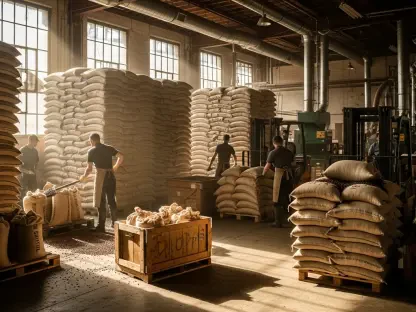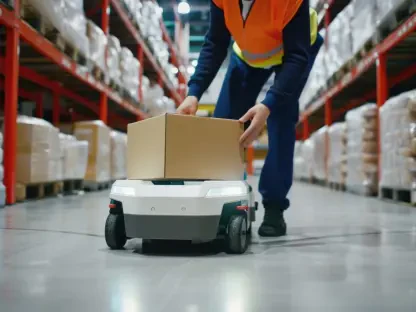I’m thrilled to sit down with Rohit Laila, a veteran in the logistics industry with decades of experience spanning supply chain and delivery. Rohit’s deep expertise and passion for technology and innovation in the sector make him the perfect person to shed light on the evolving world of aviation logistics, particularly in the context of e-commerce. Today, we’re diving into the recent expansion of a major import parcel hub at Liege Airport, exploring how this development is shaping the future of online retail logistics, the role of cutting-edge technology, and the strategic importance of location in this fast-paced industry.
How did the decision come about to establish a new import parcel hub at Liege Airport, and what makes this location stand out?
The decision to set up a hub at Liege Airport was driven by the booming demand for e-commerce logistics in Europe. Liege has carved out a reputation as a critical cargo hub, especially for online retail, due to its strategic position in the heart of Europe. It offers excellent connectivity to major markets, which is vital for fast delivery times. Additionally, the airport’s infrastructure and focus on cargo operations made it a natural choice for handling high volumes of parcels efficiently. It’s really about being where our customers need us most to ensure seamless operations.
What are some of the standout features of the new 5,500 square meter warehouse that support its role in e-commerce?
This warehouse was designed with high-volume processing in mind. It’s optimized for fast-turnaround parcel flows, meaning we’ve streamlined every aspect of the layout to minimize delays—think efficient sorting zones and cross-dock setups that keep parcels moving quickly from inbound to outbound. The facility also integrates advanced technology to handle the scanning and sorting of shipments at scale, ensuring we can manage up to 300 tons of cargo daily without hiccups. It’s all about speed and precision to meet the demands of e-commerce.
Can you walk us through what a throughput capacity of 300 tons per day looks like in practical terms?
Sure, 300 tons per day translates to a massive volume of parcels—think everything from small consumer electronics to clothing and household goods, which are typical in e-commerce shipments. This capacity reflects a mix of shipments coming in from international flights, getting sorted, and then moving out for last-mile delivery across Europe. It’s a testament to the facility’s design and our team’s ability to handle intense workflows, ensuring that even during peak seasons, we keep things moving without bottlenecks.
How does this hub manage the entire import logistics process, from start to finish?
We’ve built an integrated system that covers every step. It starts with cargo collection right from the aircraft, followed by shuttling to the warehouse. Once there, parcels are broken down, scanned, and sorted with precision. Finally, they’re loaded for last-mile delivery to their destinations. What sets this apart is the seamless coordination—every stage is tracked and optimized for speed, so our customers experience minimal delays and full visibility into where their shipments are at any given time. It’s a complete end-to-end solution.
Liege has been highlighted as a key player in online retail cargo. What factors have contributed to this status?
Liege’s rise as a cargo hub for e-commerce comes down to a few key factors. First, its geographic location in Europe offers unparalleled access to major consumer markets, which is critical for express shipping. Second, the airport has invested heavily in cargo-specific infrastructure, making it easier to handle large volumes efficiently. Lastly, there’s a strong ecosystem of logistics partners and integrators already operating there, creating a collaborative environment. All of this makes Liege a powerhouse for online retail logistics.
Can you explain how the integration of warehouse management systems with digital platforms enhances operations at the hub?
Absolutely. By connecting our customers’ warehouse management systems with our proprietary digital platform, we enable real-time visibility of shipments. This means customers can track their parcels at every stage, from arrival to delivery, with complete accuracy. It also ensures data integrity—there’s no room for errors or discrepancies in reporting. This digital integration streamlines communication and decision-making, which is crucial in a fast-moving environment like e-commerce logistics where timing is everything.
The facility has been described as handling complex, piece-intensive flows. Could you elaborate on what that entails?
Piece-intensive flows refer to shipments that involve a high number of individual items, often with varying sizes, weights, or handling requirements. For example, a single consignment might include hundreds of small parcels, each needing specific sorting or routing for different destinations. Our team manages this complexity through digital tools that map out the flow and skilled staff who ensure nothing slips through the cracks. It’s challenging, but with the right systems and training, we maintain precision even under pressure.
What role does digital integration play in tackling these complex operational challenges?
Digital integration is a game-changer for handling complex flows. It allows us to automate much of the tracking and sorting process, reducing human error and speeding up operations. For instance, every parcel is scanned and logged into the system, so we have real-time data on its status and location. This transparency helps us anticipate issues before they arise and adjust workflows on the fly. Plus, going paperless boosts efficiency and supports our sustainability goals by cutting down on waste.
What is your forecast for the future of e-commerce logistics, especially with hubs like Liege leading the way?
I see e-commerce logistics continuing to grow at an incredible pace, driven by consumer demand for faster, more reliable deliveries. Hubs like Liege will play a pivotal role as central nodes in this network, leveraging technology to handle ever-increasing volumes. I expect we’ll see even more automation and data-driven solutions in the coming years, alongside a stronger push for sustainability in operations. The challenge will be balancing speed with environmental responsibility, but with innovation, I’m confident the industry will rise to meet it.









